Defixiones: Ancient Roman Curse Tablets Became Big Business
Ellen Lloyd - AncientPages.com - For over 700 years, ancient Romans bought a variety of defixiones – curse tablets to cast evil spells on anyone and anything.
Ancient Romans believed in the power of spells and thought these magical curse tablets would help them destroy their enemies. But you have to act quickly. It was vital to buy the curse tablet before your enemy came up with the same idea.
The Roman curse tablets from Bath Britain's earliest prayers. One of the 130 Bath curse tablets. The inscription in British Latin translates as: "May he who carried off Vilbia from me become liquid as the water. May she who so obscenely devoured her become dumb". Image credit: Mike Peel - (www.mikepeel.net) - CC BY-SA 4.0
The Ancient Business Of Buying Curse Tablets
The defixiones, curse tablets, were made of lead or lead alloys. It was a material that would endure harsh climatic elements and survive longer. It was less costly than the papyrus and wax alternatives. Sometimes limestone, ceramics, and even semi-precious stones were used to convey the desired ancient messages.
According to Pliny, the Elder (23 AD - 79 AD), a Roman scholar, Gaius Plinius Secundus, knew ancient Romans deeply feared curses.
Archaeologists have unearthed more than 1500 ancient curse tablets. Most of them were found in Italy, often near Rome. Several curse tablets have also been unearthed in Roman Britain. People bought curse tablets from "professional" magicians, who had ready curse tables in their stocks. All the customer had to do was state the victim's name. This name was quickly inscribed on the defixiones.
The curse tablets conveyed messages to influential gods and spirits, usually asking them for victory over an enemy by binding them up in terrible trouble.
Ancient Curse Tablets Were Often Placed In Graves
Defixiones were laid as close to the victim as possible.
Roman curse tablet with voces mysticae in Greek. The name of the target, Caius Iulius Viator, was added in Latin. Found in Tongeren (Belgium), 70-100 CE, Gallo-Roman Museum (Tongeren). Image credit: GRM Tongeren - CC0
For instance, a curse on a chariot racer would best be concealed in the stadium; the one targeting a prominent bureaucrat would need to be buried near his government office. It happened that they were also placed inside graves.
Ancient Romans believed that people who died early were doomed to wander around the Earth as ghosts. By placing defixiones inside graves, the curses could help the deceased get peace if the spirit helped execute the curse. The fact that it was strictly prohibited to open graves did not stop people who quietly sneaked in at night at placed a curse tablet inside the tomb.
Everyone Was Casting Spells And Cursed Others
There was no limit to the number of curses in people's beliefs. Many unearthed defixiones showed signs of people's selfishness and greed, revenge, justice, sport, business, love, and sex. Rivals in sports and business, for example, were cursed to fail.
Curse Tablets Were Forbidden Several Times
The ancient curse tablets became extremely popular and were undoubtedly a big business. The Roman Emperor made several attempts to forbid people from using them. The punishment for using defixiones was crucifixion or killing by wild animals. Nevertheless, no punishment could frighten ancient Romans, who kept buying the curse tablets and using them against their enemies.
Early Christians also used curse tablets for a while before the Church successfully managed to stop the spread and use of the defixiones.
Updated on January 15, 2024
Written by Ellen Lloyd – AncientPages.com
Copyright © AncientPages.com. All rights reserved. This material may not be published, broadcast, rewritten or redistributed in whole or part without the express written permission of AncientPages.com
Expand for referencesMore From Ancient Pages
-
 Famous Viking Ragnar Lodbrok – Legendary Fearless Sea-King Of The North
Featured Stories | Apr 24, 2016
Famous Viking Ragnar Lodbrok – Legendary Fearless Sea-King Of The North
Featured Stories | Apr 24, 2016 -
 Mogao Grottoes, Dunhuang, China – Fascinating Statues, Manuscripts And Wall Paintings
Featured Stories | Dec 15, 2015
Mogao Grottoes, Dunhuang, China – Fascinating Statues, Manuscripts And Wall Paintings
Featured Stories | Dec 15, 2015 -
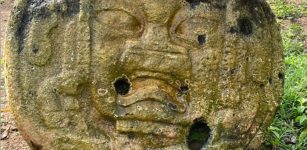 Two Huge Olmec Reliefs Recovered After Anonymous Tip
Archaeology | Aug 9, 2022
Two Huge Olmec Reliefs Recovered After Anonymous Tip
Archaeology | Aug 9, 2022 -
 How Did Ancient People Wake Up On Time Before The Alarm Clock Was Invented?
Ancient History Facts | Mar 29, 2025
How Did Ancient People Wake Up On Time Before The Alarm Clock Was Invented?
Ancient History Facts | Mar 29, 2025 -
 How Human Ancestors Used Fire – New Methods Give Answers
Archaeology | Nov 2, 2022
How Human Ancestors Used Fire – New Methods Give Answers
Archaeology | Nov 2, 2022 -
 Underwater Stone Age Village Habonim North Found Off Israel’s Carmel Coast Thrived During Climate Change
Archaeology | Aug 1, 2024
Underwater Stone Age Village Habonim North Found Off Israel’s Carmel Coast Thrived During Climate Change
Archaeology | Aug 1, 2024 -
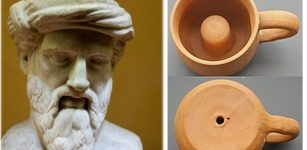 Pythagorean Cup Was A Practical Joke To Punish Greedy Drinkers And It Still Fools People
Ancient History Facts | Dec 18, 2020
Pythagorean Cup Was A Practical Joke To Punish Greedy Drinkers And It Still Fools People
Ancient History Facts | Dec 18, 2020 -
 Binary Code Was Used In Ancient India And Polynesia Long Before Leibnitz Invented It
Ancient Technology | Sep 28, 2017
Binary Code Was Used In Ancient India And Polynesia Long Before Leibnitz Invented It
Ancient Technology | Sep 28, 2017 -
 10 Ancient Love Symbols
Featured Stories | Mar 2, 2023
10 Ancient Love Symbols
Featured Stories | Mar 2, 2023 -
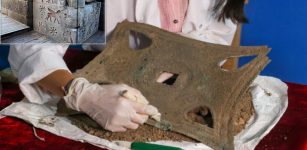 Ornamental Bronze Wall Plate Unearthed In Ayanis Castle Built By Urartian King Rusa II
Archaeology | Sep 13, 2022
Ornamental Bronze Wall Plate Unearthed In Ayanis Castle Built By Urartian King Rusa II
Archaeology | Sep 13, 2022 -
 Fylgja – Norse Guardian Spirit Was Deeply Respected
Norse Mythology | Apr 1, 2024
Fylgja – Norse Guardian Spirit Was Deeply Respected
Norse Mythology | Apr 1, 2024 -
 Did Ancient Oshoro Stone Circle Serve As A Portal To The Spirit World?
Featured Stories | Aug 19, 2017
Did Ancient Oshoro Stone Circle Serve As A Portal To The Spirit World?
Featured Stories | Aug 19, 2017 -
 Forbidden Knowledge: Secret Ancient Gates Of The Shining Ones – The Beginning – Part 1
Ancient Mysteries | Jul 12, 2019
Forbidden Knowledge: Secret Ancient Gates Of The Shining Ones – The Beginning – Part 1
Ancient Mysteries | Jul 12, 2019 -
 Millennial Pre-Colonial Cultural Influence Is Evident In The Amazon Forest
Archaeology | Jun 28, 2020
Millennial Pre-Colonial Cultural Influence Is Evident In The Amazon Forest
Archaeology | Jun 28, 2020 -
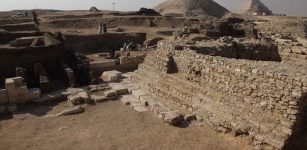 Pyramid Of Unknown Ancient Egyptian Queen And Hundreds Of Mummies Discovered In Saqqara
Archaeology | Nov 17, 2022
Pyramid Of Unknown Ancient Egyptian Queen And Hundreds Of Mummies Discovered In Saqqara
Archaeology | Nov 17, 2022 -
 On This Day In History: Ueshiba Morihei, The ‘Founder of Aikido’ Was Born – On Dec 14, 1883
News | Dec 14, 2016
On This Day In History: Ueshiba Morihei, The ‘Founder of Aikido’ Was Born – On Dec 14, 1883
News | Dec 14, 2016 -
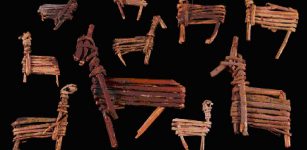 Tusayan Pueblo Ruins And Split Twig Figurines Tell Story Of People Who Once Inhabited The Grand Canyon
Civilizations | Nov 13, 2018
Tusayan Pueblo Ruins And Split Twig Figurines Tell Story Of People Who Once Inhabited The Grand Canyon
Civilizations | Nov 13, 2018 -
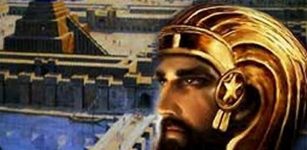 Legacy Of The Ancients: Cyrus The Great Cylinder – The Charter Of Human Rights
Featured Stories | Feb 17, 2014
Legacy Of The Ancients: Cyrus The Great Cylinder – The Charter Of Human Rights
Featured Stories | Feb 17, 2014 -
 On This Day In History: Vädersol Painting Depicting ‘Sun Dog’ Phenomenon Observed Over Stockholm – On Apr 20, 1535
News | Apr 20, 2016
On This Day In History: Vädersol Painting Depicting ‘Sun Dog’ Phenomenon Observed Over Stockholm – On Apr 20, 1535
News | Apr 20, 2016 -
 Viking Cork Settlement Re-Writes Ancient History Of Ireland
Archaeology | Jan 16, 2018
Viking Cork Settlement Re-Writes Ancient History Of Ireland
Archaeology | Jan 16, 2018


